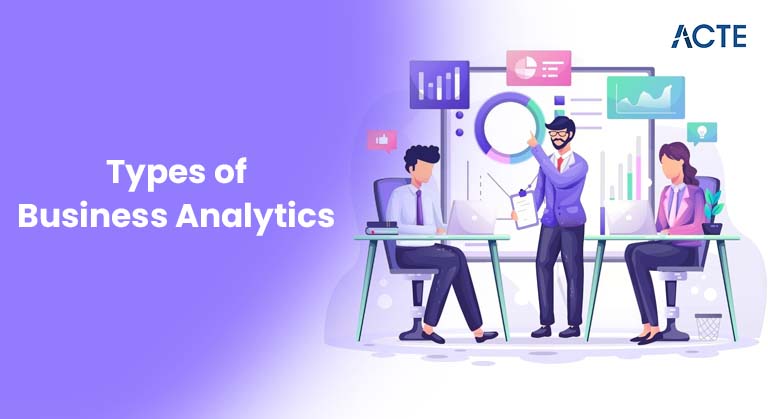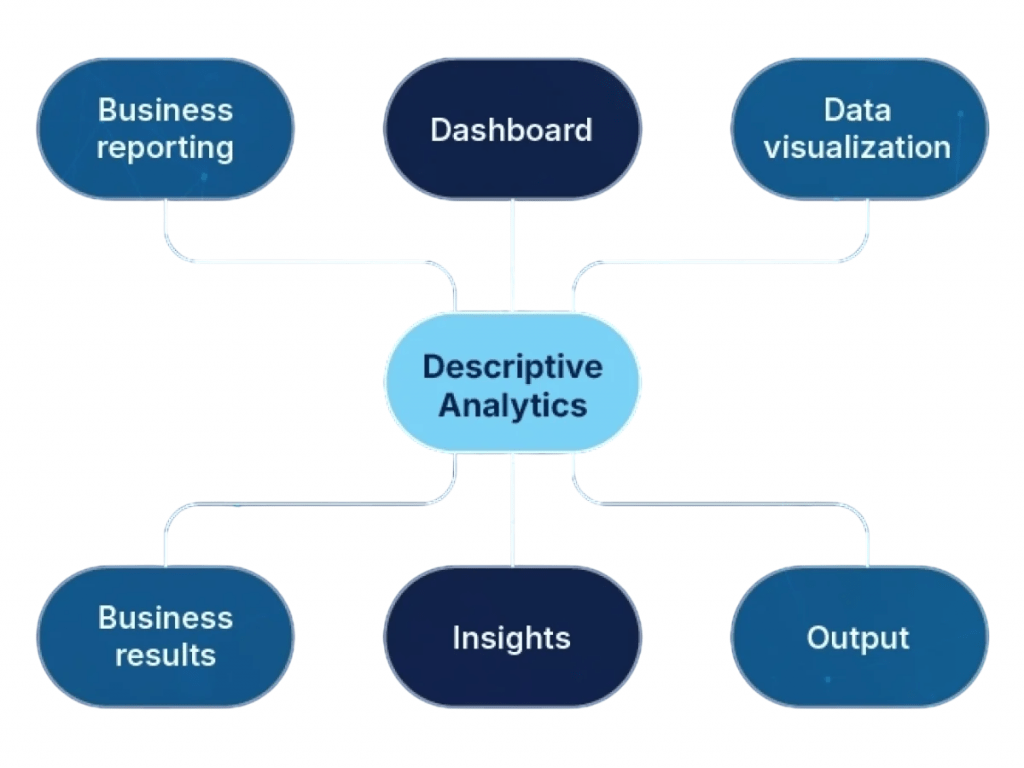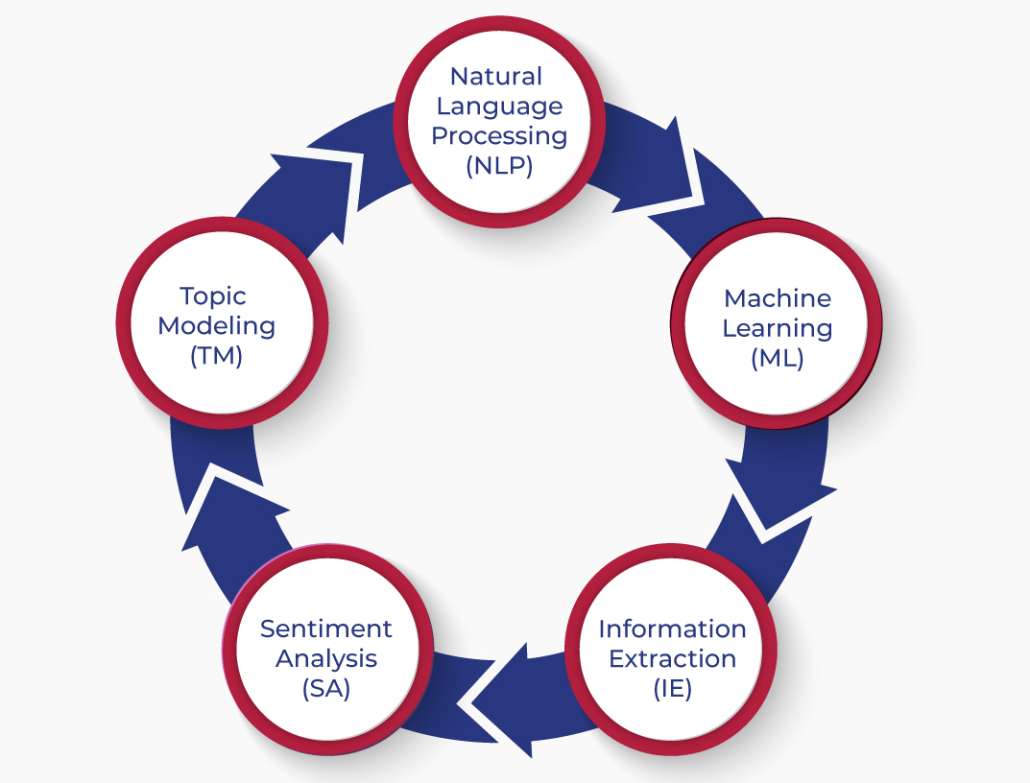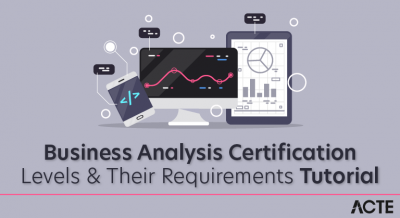
- Introduction
- Descriptive Analytics
- Diagnostic Analytics
- Predictive Analytics
- Prescriptive Analytics
- Real-Time Analytics
- Text Analytics
- Web Analytics
- Visual Analytics
- Operational Analytics
- Strategic Analytics
- Choosing the Right Type
- Conclusion
Introduction
In today’s data-driven world, organizations collect vast amounts of data from diverse sources. The ability to analyze this data effectively can transform business operations, uncover hidden insights, and foster smarter decision-making.Types of Business Analytics, broadly defined, is the systematic computational analysis of data or statistics. However, analytics is not a one-size-fits-all solution. There are various types of analytics, each serving a distinct purpose and catering to different business needs.Focuses on historical data analysis Understanding these types ranging from descriptive and diagnostic to predictive and prescriptive allows organizations to select the right analytical approach tailored to their goals. Beyond these foundational types, specialized forms such as real-time, text, web, visual, Operational performance tracking, and strategic analytics address specific use cases and industries.This comprehensive article explores each type of analytics, explaining its purpose, methodology, applications, and how to choose the right analytics approach for your organization.
Are You Interested in Learning More About Web Developer Certification? Sign Up For Our Business Analyst Online Training Today!
Descriptive Analytics
Descriptive analytics answers the question: “What has happened?” It summarizes historical data to provide insight into past events and trends. This form of analytics is the most basic and widely used; it offers a snapshot of organizational performance through data aggregation, reporting, and visualization. Key Characteristics
Focuses on historical data analysis- Uses techniques like data aggregation, data mining, and reporting.
- Common tools: dashboards, scorecards, reports, and summary statistics.
- Provides KPIs, trends, and patterns. Applications
- Monthly sales reports showing revenue by region.
- Website traffic summaries.
- Customer demographics analysis.
- Operational performance tracking. Benefits
- Analyzing why sales dropped in a particular quarter.
- Understanding factors behind customer churn.
- Examining why a manufacturing defect occurred.
- Investigating reasons for website bounce rates. Benefits
- Employs techniques such as regression, classification, time series analysis, and machine learning.
- Generates probability scores or risk assessments. Applications
- Forecasting customer demand and sales.
- Predicting equipment failure in manufacturing.
- Assessing credit risk for loan approvals.
- Identifying potential fraud activities. Benefits
- Recommending optimal inventory levels to reduce stockouts.
- Dynamic pricing models in e-commerce.
- Scheduling and routing in logistics.
- Personalized marketing campaign recommendations. Benefits
- Processes streaming data with minimal latency.
- Uses technologies like event processing, in-memory databases, and streaming analytics platforms.
- Focuses on speed and immediacy. Applications
- Fraud detection during financial transactions.
- Monitoring social media for brand sentiment.
- Real-time personalization on websites.
- Operational monitoring of equipment and systems. Benefits
- Involves natural language processing (NLP) and machine learning.
- Techniques include sentiment analysis, entity recognition, topic modeling, and text classification. Applications
- Analyzing customer feedback to identify pain points.
- Monitoring social media conversations for brand reputation.
- Automating support ticket categorization.
- Extracting insights from legal or medical documents. Benefits
- Tracks page views, bounce rates, click paths, and conversion rates.
- Uses tools such as Google Analytics, Adobe Analytics, and custom platforms.
- Provides insights on user acquisition, engagement, and retention. Applications
- Optimizing website navigation and content.
- Measuring the effectiveness of online marketing campaigns.
- Tracking e-commerce sales funnels.
- Understanding visitor demographics and behaviors. Benefits
- Uses dashboards, charts, heat maps, and other graphical tools.
- Supports exploration and pattern discovery.
- Enables users to drill down into data visually. Applications
- Executive dashboards for business KPIs.
- Fraud pattern visualization.
- Customer segmentation heatmaps.
- Supply chain performance monitoring. Benefits
- Emphasizes efficiency, quality, and throughput.
- Applies analytics to manufacturing, logistics, customer service, and IT operations.
- Often integrated with business process management systems. Applications
- Monitoring production line performance.
- Analyzing call center effectiveness.
- Tracking order fulfillment.
- Managing IT infrastructure health. Benefits
- Integrates data from multiple sources.
- Focuses on macro-level trends and scenarios.
- Involves scenario planning, risk assessment, and forecasting. Applications
- Market entry analysis.
- Competitor benchmarking.
- Corporate strategy formulation.
- Investment portfolio analysis. Benefits
- To anticipate future trends and risks, predictive analytics is suitable.
- For guidance on actions to improve outcomes, prescriptive analytics is best.
- If immediate insights are necessary, real-time analytics is required.
- To analyze unstructured data like text, use text analytics.
- For improving website experiences, choose web analytics.
- To enhance data comprehension through visuals, opt for visual analytics.
- To optimize daily business processes, operational analytics is key.
- For long-term strategic decisions, use strategic analytics.
- Consider Data Availability and Quality: The effectiveness of each type depends on the quality, volume, and variety of data available. For example, predictive and prescriptive analytics require large, high-quality datasets and sophisticated infrastructure.
- Evaluate Technology and Skills: Advanced analytics such as predictive, prescriptive, and text analytics require specialized tools, computing power, and skilled data scientists or analysts.
- Balance Cost and Benefit; More sophisticated analytics often require greater investment. Organizations must weigh the expected benefits against costs and complexity.
- Start Small, Scale Up: It’s advisable to start with descriptive analytics to build data foundations and gradually progress to more advanced analytics as capabilities mature.
Descriptive analytics helps organizations understand the current state of affairs, identify patterns over time, and establish benchmarks. It lays the foundation for more advanced analytics by organizing and summarizing data in an understandable format.

Diagnostic Analytics
Diagnostic analytics delves deeper to answer: “Why did it happen?” It investigates the causes of past outcomes by uncovering relationships, correlations, and anomalies in the data. Key Characteristics
Seeks root causes and explanationsEmploys statistical techniques such as drill-down, data discovery, and correlations. Often uses visualization tools to pinpoint problem areas.
ApplicationsDiagnostic analytics provides context to descriptive insights, enabling managers and analysts to understand drivers behind trends and issues. This understanding is critical for informed decision-making and problem-solving.
Predictive Analytics
Predictive analytics answers: “What is likely to happen?” It uses historical data and statistical algorithms to forecast future outcomes. This type of analytics applies machine learning, data mining, and modeling techniques to predict trends, behaviors, and events. Key Characteristics
Uses historical and real-time dataPredictive analytics enables proactive decision-making by anticipating events, reducing uncertainty, Operational performance tracking and improving planning. Organizations can allocate resources more efficiently and seize opportunities ahead of competitors.
Are You Preparing for Business Analyst Jobs? Check Out ACTE’s Business Analyst Interview Questions & Answers to Boost Your Preparation!
Prescriptive Analytics
Prescriptive analytics addresses: “What should we do?” It recommends actions based on predictions, Focuses on historical data analysis optimizing outcomes by suggesting the best course of action considering constraints and objectives. Key Characteristics
Builds on predictive analytics.Prescriptive Uses optimization algorithms, simulations, and heuristics. Often integrates with decision support systems.
ApplicationsPrescriptive analytics helps businesses not only predict future scenarios but also actively influence them by offering actionable advice. It supports complex decision-making environments where multiple factors and constraints exist.
Real-Time Analytics
Real-time analytics involves processing and analyzing data immediately as it becomes available, enabling instantaneous insights and decisions.
Key CharacteristicsOrganizations that adopt real-time analytics can respond swiftly to emerging events, mitigate risks immediately, Operational performance tracking and enhance customer experiences through timely interventions.
Are You Considering Pursuing a Master’s Degree in Business Analyst? Enroll For Business Analyst Masters Program Training course Today!
Text Analytics
Text analytics extracts meaningful information from unstructured text data such as emails, social media posts, documents, and reviews.
Key CharacteristicsText analytics unlocks valuable insights from vast amounts of unstructured data, helping organizations understand customer sentiment, automate workflows, and support strategic initiatives.

Web Analytics
Web analytics focuses on the collection, measurement, and analysis of web traffic data to understand user behavior on websites and digital platforms.
Key CharacteristicsWeb analytics helps businesses enhance online user experiences, increase engagement, and maximize digital marketing ROI by grounding decisions in user data.
Visual Analytics
Visual analytics combines automated analysis techniques with interactive visualizations to help users understand complex data and make faster decisions.
Key CharacteristicsVisual analytics makes data accessible and actionable for a broad audience, improving comprehension, collaboration, and insight discovery.
Are You Interested in Learning More About Business Analyst? Sign Up For Our Business Analyst Online Training Today!
Operational Analytics
Operational analytics focuses on improving day-to-day business processes by analyzing operational data in near real-time or historical contexts.
Key CharacteristicsOperational analytics drives continuous process improvement, cost reductions, and service excellence by providing actionable insights on operational activities.
Strategic Analytics
Strategic analytics supports long-term decision-making by analyzing data to identify market opportunities, threats, and competitive positioning.
Key CharacteristicsStrategic analytics enables organizations to anticipate market changes, allocate resources wisely, and sustain competitive advantage.
Choosing the Right Types of Business Analytics
Assess Business NeedsThe choice of analytics type depends heavily on the problem you aim to solve: Focuses on historical data analysis for understanding past performance, use descriptive and diagnostic analytics.
Conclusion
Understanding the diverse types of analytics empowers organizations to leverage data effectively at every level from summarizing past events to shaping future strategies. Each analytics type offers unique capabilities tailored to specific questions and Types of Business Analytics. By selecting and integrating the right analytics approach, organizations can enhance decision-making, drive operational efficiency, Focuses on historical data analysis innovate products and services, Operational performance tracking and maintain a competitive edge in an increasingly complex and data-rich world.




